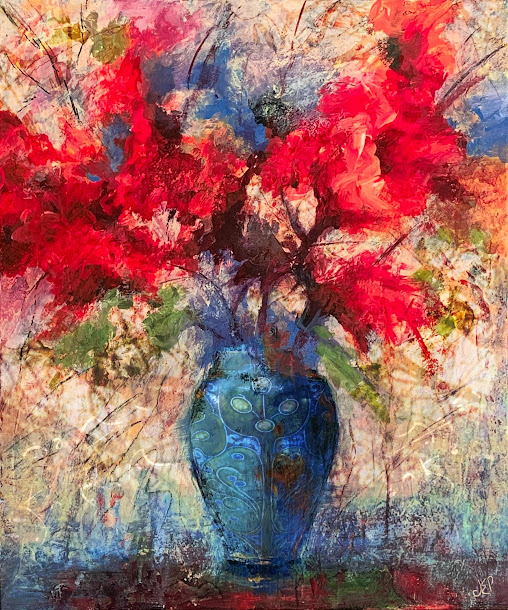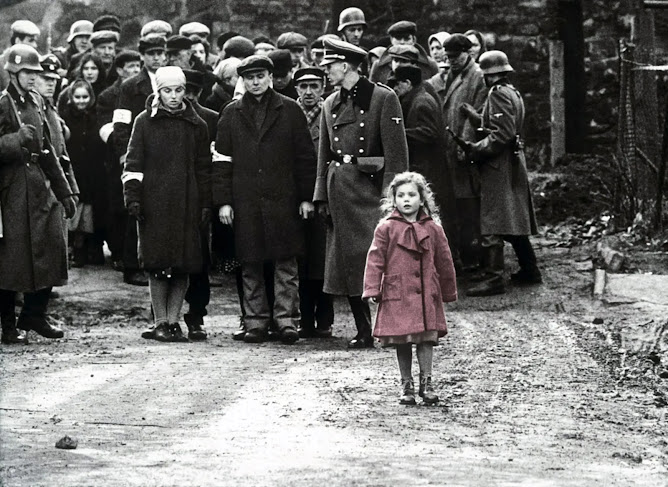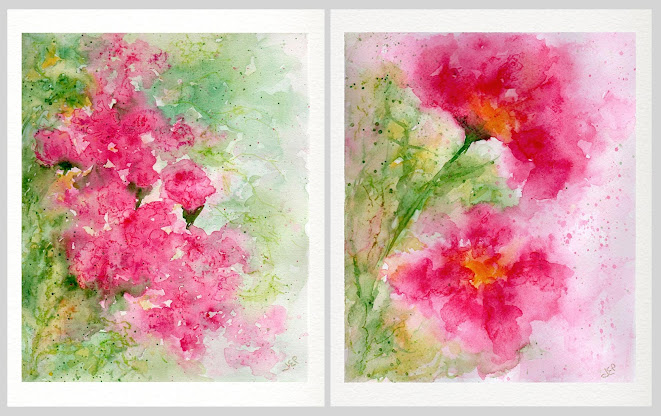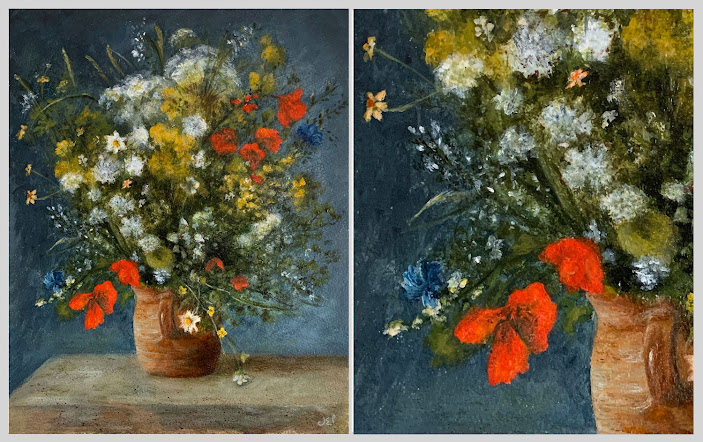
|
| Valley of the Yosemite 1864, Albert Bierstadt, oil on paperboard |
Imagine, if you will: It was, yet another wet weekend, my productive motivation was on vacation and I was struggling to leave the comfort of the couch. Feeding my YouTube addiction required little effort and I’d managed to convince myself that bingeing on anything from, ‘hacking behaviour’ to ‘think yourself younger’, was absolutely necessary and would change my life.
After an hour or so - maybe three 😳 I was in the trance-like state, achieved from watching too much TV, when something grabbed my attention. It was a video about how to reprogram your brain with Neuroscientist, Dr Tara Swart. She spoke about ‘Neuroaesthetics’, a term I’d never heard before. She went on to talk about how art can change our brains. I went from 0 to 60 in 5 seconds, flew off the sofa to boot up my computer and learn more. There’s an actual science that looks at the positive effects of art on the brain. Fantastique! It’s what I’d been wanting to share with you, so grab a coffee or something stronger and let’s take a look.
Neuroaesthetics
 |
| David 1501 - 1504, Michelangelo (17 ft × 6.5 ft) |
Semir Zeki, Professor of Neuroaesthetics at University College London, is a pioneer in the field. With the help of neuroimaging technology, he has discovered that there is an area of the brain called the medial orbital frontal cortex that always ‘lights up,’ with the perception of beauty.
In a study conducted by Zeki, participants underwent brain scans while being shown images of paintings by major artists. The study found that when people viewed art, they thought was the most beautiful, blood flow to the brain's pleasure centre increased by up to 10%, triggering the release of dopamine - the ‘feel-good’ neurotransmitter. This can result in a neurochemical exchange leading to an expression of emotion, leaving us feeling more connected to ourselves and others. Studies have also shown that observing art can stimulate the creation of new neural pathways and impact brain wave patterns.
Dopamine is not the only neurotransmitter at play when we immerse ourselves in visual art. In fact, a symphony of neurotransmitters, including serotonin, acetylcholine, noradrenaline, oxytocin (the love hormone), and others, contributes to the intricate neural processes involved in the perception and appreciation of art. More about that shortly.
Neural Pathways: What’s That All About?

|
| Joseph Mallord William Turner, The Burning of the Houses of Lords and Commons, 1834 (92 x 123 cm, 36 x 48") oil on canvas |
Why would I want new neural pathways? What’s wrong with the ones I already have? Glad you asked…
Neuroplasticity is the term for the brain’s ability to form new neural pathways. We want new ones as they improve our brain health, enhance memory and increase mental sharpness as we age. They can also help us overcome previously held beliefs or habits, allowing more flexible and adaptive behaviours.
It is only in the past 20ish years that there has been a paradigm shift. Until the early 2000s, scientists believed that the brain was hardwired, meaning, that what you were born with, you were stuck with. Research began to challenge those long-held beliefs and the concept of neuroplasticity, the brain’s ability to grow and change, gained significant support. It has now been scientifically proven that we can, indeed change who we are from the inside out.
This understanding has opened up new possibilities for treatments and interventions as the brain can adapt, improve function and even recover from brain injuries. It is no longer inevitable that, as we age, we will evolve into the ‘grumpy old man or woman’. We can utilise our brains to make different choices.
So, when you engage with art and stimulate new neural pathways, you're essentially giving your brain a workout, making it more versatile and better at handling whatever life throws at you. It can boost your problem-solving abilities, enhance creativity, and make you more adaptable in various aspects of your life. Who wouldn’t want some of that?
Neurotransmitters: Here's The Scoop?
These messengers are crucial to your survival as they impact various functions in your body, including mood, memory, and movement, influencing how you feel and behave. Scientists have identified at least 100 neurotransmitters and there's ongoing exploration for more. Let’s not look at them all, and instead zoom in on the ones that make us happy. There are four main contenders, often referred to as the ‘Happy Hormones.’
The Happy Hormones
When viewing visual art, the brain releases several neurotransmitters associated with happiness: dopamine, oxytocin, serotonin, and endorphins.
Dopamine is linked to rewards and motivation, driving us toward goals and providing pleasure upon achievement. It also plays a role in controlling memory, mood, sleep, learning, concentration, movement, and other bodily functions.
Serotonin is associated with happiness, focus and calmness and has been linked to aesthetic experiences. Interestingly, 90% of our serotonin is made in our gut (intestines) and travels to the brain via the vagus nerve. It’s an open return ticket and travels in both directions. Low levels of serotonin are linked to conditions such as anxiety and depression.
‘Balancing serotonin and dopamine is critical for the success of your body and your mind. So don’t forget to incorporate play and rest into your schedule. You need it more than you might think,’ Andrew Huberman, Ph.D., neuroscientist and tenured professor in the Department of Neurobiology at Stanford School of Medicine.
Oxytocin is often referred to as the ‘love hormone,’ or ‘cuddle hormone’ as it allows us to be sociable, feel empathy and bond with each other. It also promotes trust, romantic attachment and reduces stress. A simple way to get a dose of Oxy is to give someone a hug. So, if the art aint hitting the spot, have a cuddle instead.
Endorphins are the body’s natural painkillers, promoting pleasure, reducing stress, anxiety, depression, inflammation, improving mood, and boosting self-esteem. They're produced during activities such as exercise, sex, laughter, dancing, and even when a person is engaged in creating or observing art. Endorphins are often associated with the ‘feel-good’ sensation experienced after engaging in pleasurable or physically demanding activities. This is what the ‘runner’s high’ pertains to. I can almost remember it!
Do You Have an Aesthetic Mindset?
Would You Like One? Well, yes you would and here’s why. But before we delve into the 'why,' let’s start by understanding what an aesthetic mindset is; you may already have one.
What is Aesthetics?
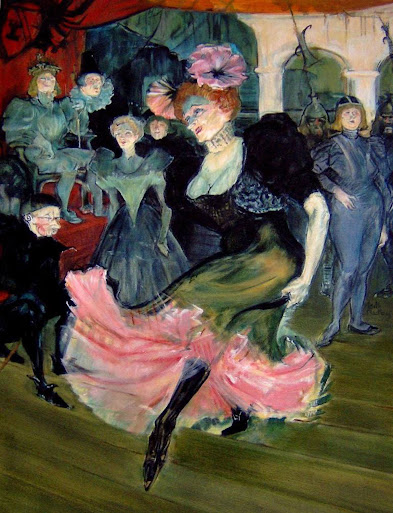
|
Henri de Toulouse-Lautrec, Marcelle Lender Dancing Bolero
1895 (145 x 149 cm (57 x 58") oil on canvas |
Art Bite: The term itself is derived from the ancient Greek aisthesis, meaning sensation or perception in contrast to intellectual concepts or rational knowledge.
Aesthetic is both a noun and an adjective. As an adjective, it is used to talk about beauty or art, and people's appreciation of beautiful things. Something that has aesthetic appeal is considered beautiful. As a noun, it refers to an adopted style or theme; for example, a shabby chic aesthetic, minimalist or gothic aesthetic. It can even pertain to a musical sound, interior design or a social media presence.
What's your aesthetic? Is your home cool and minimalist or is it more of a gothic mansion? Are you the suit-and-tie kind of guy, or the ageless bohemian? Embracing your aesthetic is like curating your own visual identity, influencing not only the art you appreciate but also the way you shape your surroundings and present yourself to the world.
An Aesthetic Mindset Explained
Now you’ve determined your ‘aesthetic’, let’s dive into your mind. What on earth is an aesthetic mindset?
1. Curiosity and Exploration: People with an aesthetic mindset tend to be highly curious and enjoy exploration. They are motivated to engage in creative activities and are open to new sensory experiences. Does this describe you?
2. Sensorial Awareness: The aesthetically minded are tuned in to sensorial awareness, appreciating the beauty and harmony found in various aspects of life, including art, nature, architecture, music, and everyday objects.
3. Passion for the Arts: Are you interested or passionate in making, viewing and appreciating the arts? Are you open to artistic experiences and eager to engage with the aesthetic aspects of your environment?
4. Appreciation of Beauty: How about your ability to appreciate the beauty and design surrounding you, from the arrangement of the objects in your home to the expanse of nature’s palette?
5. Awareness of Aesthetics: If you have an aesthetic mindset, it means you are conscious of how elements such as colour, lighting and sound influence your thoughts, feelings and perceptions. Are you aware, for example, of a sense of dread when you hear the ‘Eastenders’ theme tune or a feeling of joy when the sunlight bathes the garden?
The Benefits of Having an Aesthetic Mindset

|
| Gerrit Dou, Astronomer by Candlelight 1665, oil on canvas |
The more ‘yeses’ you scored above, the greater the benefits you can enjoy. See the prizes below...
Lower Stress Levels: Engaging in art, such as making or appreciating artworks, can lead to the release of the ‘happy hormones’ discussed above and lower cortisol. Cortisol is known as the stress hormone, it runs riot through our systems when life becomes overwhelming.
Increased Creativity: Not surprisingly, boosting your aesthetic mindset heightens your sense of creativity. You will be more likely to open your mind to new ideas, appreciate artistic expression and find innovative solutions to problems.
Improved Focus and Attention: Many of us struggle with distraction these days, the phone being a particular poison. Developing an aesthetic mindset helps us to pay attention to details and appreciate the subtleties and nuances that surround us. This practice of paying attention helps us to sharpen our concentration and delay responding to the onslaught of pings and dings.
Increased Sensory Awareness: The aesthetically minded tend to be more in tune with their senses. This means they can have a richer and more nuanced experience of themselves and the world, from the taste of food to the sounds in their environment.
Enhanced EQ (Emotional Intelligence): Understanding how colours, shapes, and environments influence our emotions can lead to a greater awareness of our own and others' feelings.
Greater Enjoyment of Life: Aesthetic mindfulness helps us to notice life's simple pleasures. Whether it's enjoying a beautiful sunset, appreciating art, or getting lost in the lyrics of a favourite song, an aesthetic mindset can blow the blues away.
To Wrap Up
So, there you have it! We've delved into the realm of Neuroaesthetics, neurotransmitters like dopamine and serotonin and explored how an aesthetic mindset can enhance your mood, cognition, and overall well-being.
Wine and chocolate are, of course, optional and I won’t be giving them up anytime soon. However, taking a few minutes to engage with a piece of art (it doesn’t have to be mine 😉), lose yourself in a piece of music or notice the raindrops glistening on damp leaves, are simple ways to boost your happy hormones, improve your focus and calm your system. It’s a zero-cost, zero-calorie proposition so what do you have to lose?
As you sip your coffee and enjoy an aesthetic experience, remember, these simple moments can be your ticket to a happier, more mindful life. Why not give some of them a try and let me know how you get on in the comments below?
If you enjoyed this post, please share with your friends. Thanks for reading and have a wonderful weekend.
Janee 💕
To discover new works, insights from art history and the power of storytelling, Click here. For more art, follow me on Instagram and Facebook
Jane E Porter is a fine artist and illustrator from Scotland, dedicated to exploring and understanding the fascinating interplay between art, psychology and philosophy. She shares insights and observations made over the past two decades with a delightful mix of wit and wisdom. Join her as she continues her journey, delving into these themes, offering you fresh perspectives and insights on art, identity and storytelling.




